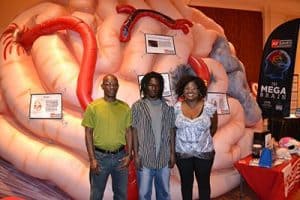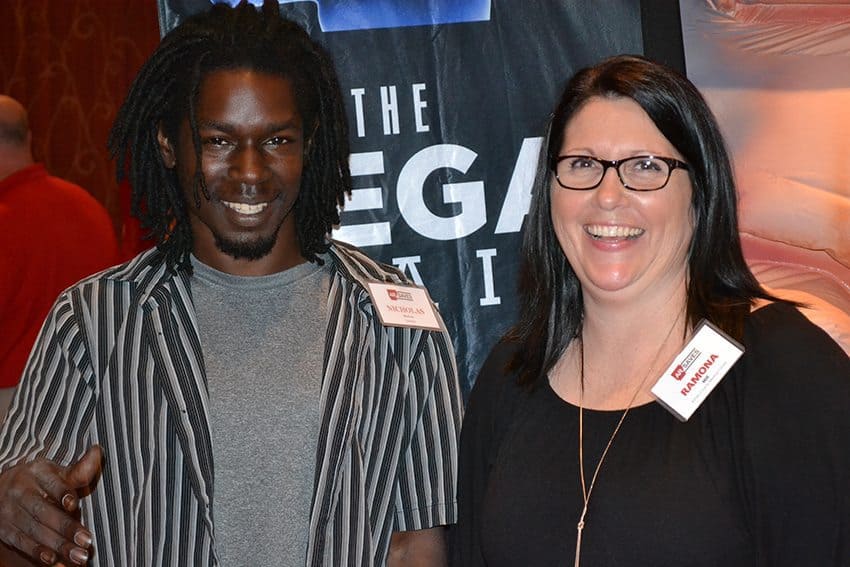Stroke Program Helps Lower Arkansas to Sixth from First in Stroke Deaths
| May 12, 2016 | Arkansas recently fell to sixth in the nation in the number of stroke deaths per capita after many years in first place, a huge improvement that health officials credit in part to a statewide telemedicine program of stroke education and treatment.
The program — Arkansas Stroke Assistance through Virtual Emergency Support, or AR SAVES — provides 48 Arkansas hospitals with round-the-clock access to stroke neurologists who can quickly assess whether a stroke patient can be helped by a clot-busting drug that often restores complete function to the patient.
UAMS Chancellor Dan Rahn, M.D., said the program has definitely helped move Arkansas from first in stroke deaths to sixth place.
“AR SAVES has shown that the appropriate application of technology can, in fact, move the needle,” Rahn said.
AR SAVES began in 2008 as a partnership between the Center for Distance Health at the University of Arkansas for Medical Sciences (UAMS) and the state Department of Human Services. It has since expanded to 48 hospitals around the state.
The program recently celebrated a milestone of having surpassed a total of 1,000 patients who have been treated with the blood-clot dissolving agent through its network of hospitals. The program also conducts statewide outreach to educate the public on how to recognize and get help fast for those having a stroke.
AR SAVES uses a high-speed video communications system that enables a stroke neurologist to evaluate patients at partner hospitals that lack such specialists. Patients must be evaluated and treated within the critical three-hour period following the first signs of stroke.

Nicholas Shelton, center, and his parents, Jesse and LaTonia Shelton, attend the AR SAVES Telestroke Conference in Little Rock and explore the inflatable Mega Brain brain model seen behind them.
Since the program began Nov. 1, 2008, more than 3,000 patients have received stroke consults through AR SAVES.
“Before AR SAVES was established and expanded, the expertise of stroke neurologists was geographically limited to one or two places in Arkansas,” said Curtis Lowery, M.D., director of the UAMS Center for Distance Health. “Today, that expertise can be in 48 hospitals statewide keeping people from death and debilitating injury from stroke. Treatment is more timely and effective with AR SAVES, but we won’t rest until Arkansas ranks last nationally for stroke deaths.”
Nicholas Shelton, 27, was at his home in Crossett in November when he had a stroke. Working together, an AR SAVES neurologist and Ashley County Medical Center Emergency Department staff ensured Shelton received the clot-busting blood thinner in less than an hour. Within another hour, Shelton had recovered motor skills and senses he had lost to stroke, temporary losses that could have been permanent ones.
“I’m thankful they were there to save my life,” Shelton said. “That’s really what it was. AR SAVES and the medical center were very responsive, and as far as I can see, it’s a good program. It works, obviously.”
In addition to its clinical, telemedicine program, AR SAVES is fully engaged in robust efforts to educate first responders, health care providers and the public about how to recognize the signs of stroke and how urgent it is to receive timely treatment.
Shelton said he was able to recognize his symptoms because he had seen the Face, Arm, Speech and Time (FAST) acronym used in public health education campaigns. FAST teaches people about stroke signs like facial drooping or an uneven smile, arm numbness or weakness, and slurred speech or difficulty speaking or understanding speech. It also emphasizes time and the importance of getting to a hospital immediately.
“AR SAVES isn’t just a network of technology and high-speed broadband,” said Renee Joiner, AR SAVES director. “It’s a network of clinicians, first responders and everyone understanding stroke and together defeating it case by case with awareness, expertise and quick action. This improvement in ranking is a victory we can share and will repeat.”
